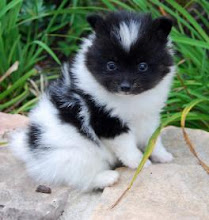March 29, 2007
"I wanna be a cowboy, baby"
by Madeline Reidy
An average, white-bread upbringing wouldn’t be complete without the cowboy dream. It may be as simple as that pair of boots with the spurs you saw at K-Mart, or those horseback riding lessons you took after you watched an old John Wayne film. Or maybe it is, as the exhibit “Jolly Cowboy” suggests, a complex mix of intangible fantasy and commercial delusion that has attracted hearts of all ages across the globe.
Curator Cara Ober’s latest exhibition attempts to demystify the world’s fascination with cowboys. Hosting a collection of work from artists of different backgrounds and ages, the “Jolly Cowboy” is more complicated than its title suggests. The diverse and playful artworks include an animated film montage, candy dots on paper and a pair of cowboy boots from Wal-Mart (retail value $11). All constitute the experiences and memories of individual artists who engage with the legendary icon of the Wild West, though the widely differing images suggest that the cowboy dream eludes clear definition.
Among the more interesting works of the exhibit is Zoë Charlton’s Bang!, a mixed media drawing in which a naked female in cowboy boots aims a gun (her hand) at her elongated shadow. The work, one of the few introspective pieces of the bunch, eroticizes the cowboy fantasy and invites a deeper look. Adding an interactive element to the exhibit is Jack Livingston’s hand-made book, “The True Story of Kit Carson, Jesse James and Me.” Before opening the book, the viewer must don white gloves resembling those out of a cowboy costume kit. Inside, the pages are filled with blurred images and text recounting a typical western battle between an outlaw and the sheriff. Though mundane, the narrative speaks of a nostalgia that pulls the viewer back into the memories of those elaborate cowboy games that almost every child constructs.
None of the work boasts of any innovative technique or stunning artistic ability. Some of it, like the boots, required the minimal effort of rummaging through the children’s section of a cheap department store. Nevertheless, the simplistic elements of each piece drive at an authentic representation of the cowboy. For most, it is a fantasy of youth, one that fades as more realistic goals of becoming a doctor or a lawyer replace the dream of lassoing a wild bull or defeating the Indians. Likewise, for most of the exhibition’s artists, the idea of a cowboy conjures up colorful memories of candy-coated desert-scapes and elaborate games involving Jesse James and the Marlboro Man.
The success of the exhibit lies ironically within its incompleteness. The viewer may spend a great deal of time attempting to decipher meaning from the works, only to remain still confused over what exactly is intended by this strange collection. But the contradictory responses of the artists invite viewers to explore their own subjective experiences, and the mystery of the cowboy proves more intriguing than any singular characterization.
The “Jolly Cowboy” may not fully demystify the strange fixation Americans have with cowboys, but perhaps it is better left ambiguous. Whether the cowboy is a hero, a symbol of violence and cigarettes, propagator of fashionable leather, or all of the above, is up to the viewer to decide.
“Jolly Cowboy” is currently showing at the DC Arts Center, located at 2438 18th Street NW. The exhibit runs through April 8 and admission is free.

No comments:
Post a Comment